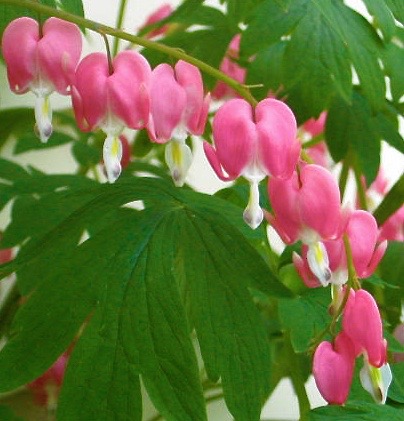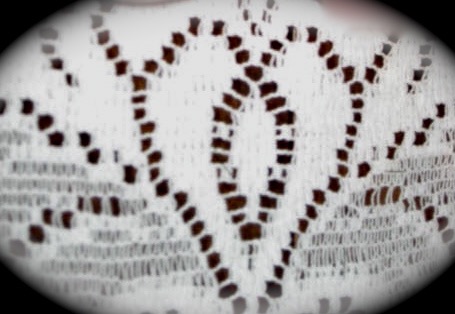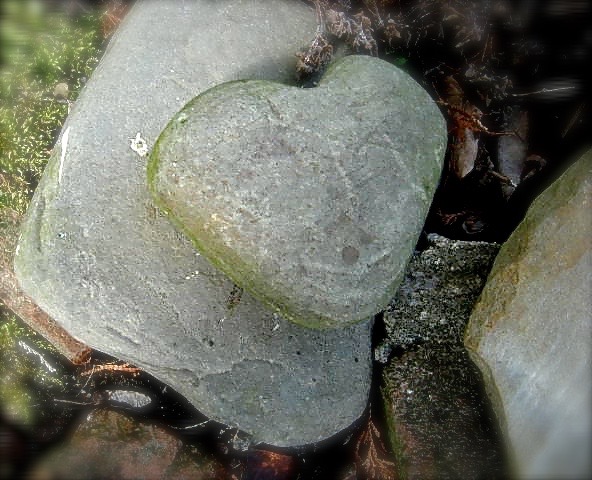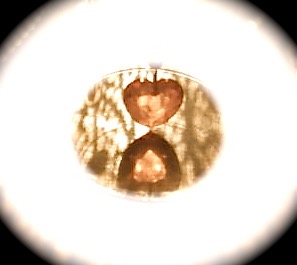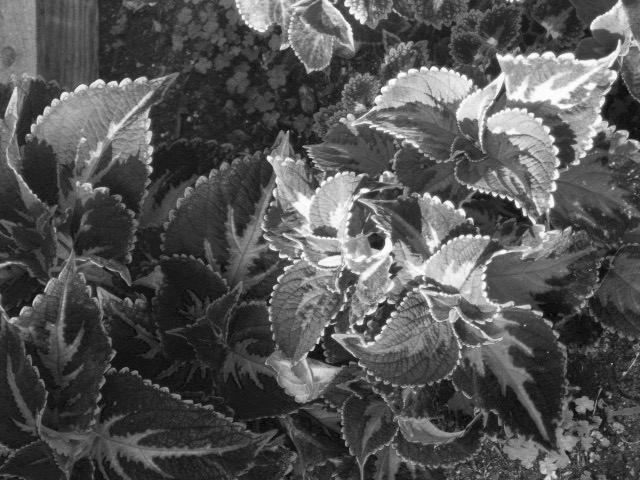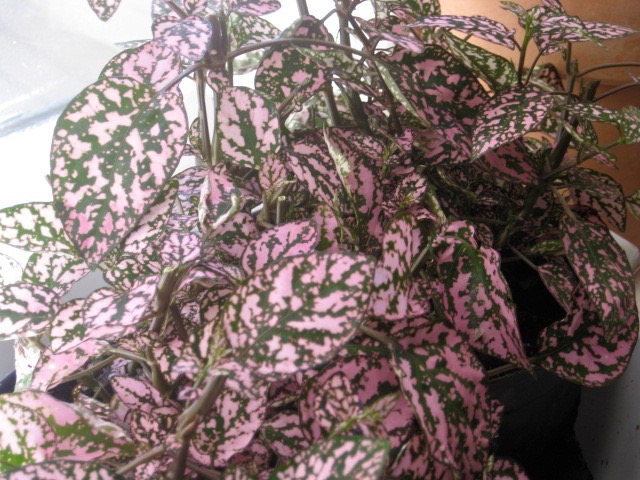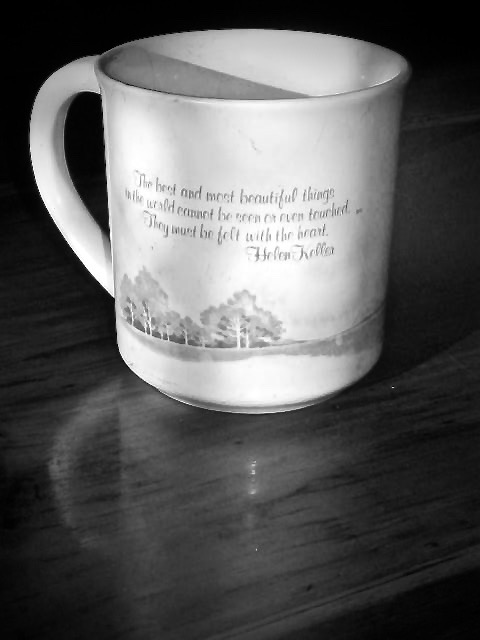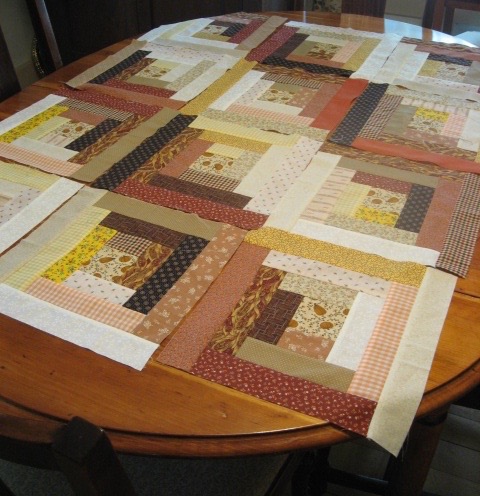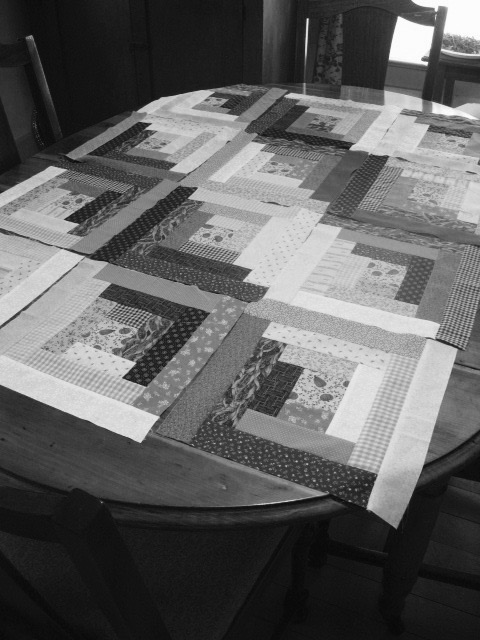I ripped the word from a piece of political junk mail I’d set aside for special use, for collaging.
Later, turning it over to slap glue on the back, I discovered to my chagrin that it was addressed to someone else, roads away. Misdelivered.
Ah, well, it did say “or current occupant,” and was therefore junk mail. And now, to my mind, it was being used for something far higher than junk. Otherwise, it would have been tossed in the trash, never rightly delivered anyway.
Now it was giving the final touch to my collage about practicing an awareness of God’s presence. It was, in fact, the only word that had been crying out to be placed there.
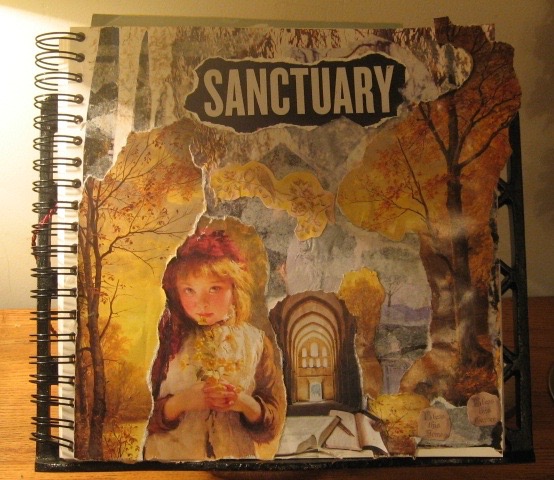
sanctuary 1 : a consecrated place: as a : the ancient Hebrew temple at Jerusalem or its holy of holies b (1) : the most sacred part of a religious building (as the part of a Christian church in which the altar is placed)… (3) : a place… for worship 2 : a place of refuge and protection*
In the collage a picture of an abandoned monastery rests just behind the left shoulder of the little girl. I realize I arranged these images thus because she represents me, and the monastery’s placement represents my heart’s longing for sanctuary, for a sacred place of communion with God right in the everyday that does not get intruded on or assaulted from without by noise and strife and distractions—or by distractions from within…
In the comments on Kel Rohlf’s God + Art post that gave me my collaging prompt, I noticed the recurring word “distracted” or “distractions,” giving the big reason people had trouble keeping in “continual conversation with God.”
Kel also asked, “Have you ever wanted to be a monk?”
My soul shouts a resounding, “Yes!” not because she wants to be cut off from fellowship with humanity, but from such distraction, which fills our world and consequently our minds and hearts. Oh, for a sanctuary from that clamor, where we could fellowship continually with God, even while doing our daily life!
But then, there was something else I’d learned about the word “sanctuary” as it’s used in scripture, before I’d even thought about doing the above collage… And I’d also just happened to have read a certain parable…
Isaiah 8:13-14 KJV speaks of God Himself as a sanctuary for us, and tells us to sanctify Him as such.
And the parable that came my way this week was that of the wedding invitation, and the people too busy, too… distracted?… to attend! (Mt 22:1-5,8-11)
Clearly God gives us some responsibility in this matter of fellowship with Him, though He doesn’t leave us alone and helpless in it. It’s our part to make an effort and to keep enlisting His help in overcoming the distractions, so we might enjoy that privileged fellowship with Him rather than be yanked about by all the foolish clamoring things that rob us of its joy.



It’s never been easy—even for Brother Lawrence. Back when I first read his words, I missed the fact that he entered monastic service late in life—and how he emphasized that the kind of fellowship he enjoyed comes only after much persistent, patient working towards it, and depends much upon us “applying to God with much diligence” for it.
And he did have a method for dealing with his distractions. Whenever he caught his mind strayed off from God, He quickly recalled himself, then asked God’s forgiveness, and His aid. For He told God frankly that left to himself he’d do nothing but wander off.
How do you overcome the distractions that hinder ongoing fellowship with God?
~~~~~
(Note about the above collage. It’s not finished at this point. Go to the next post (once it’s published) to see what happened to it to give it the definition it still needs here.)
“`
*Merriam Webster’s Collegiate Dictionary, Eleventh Edition






